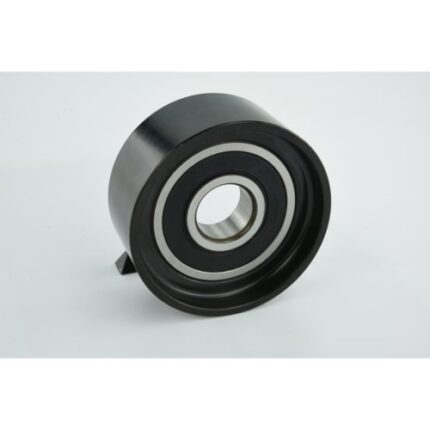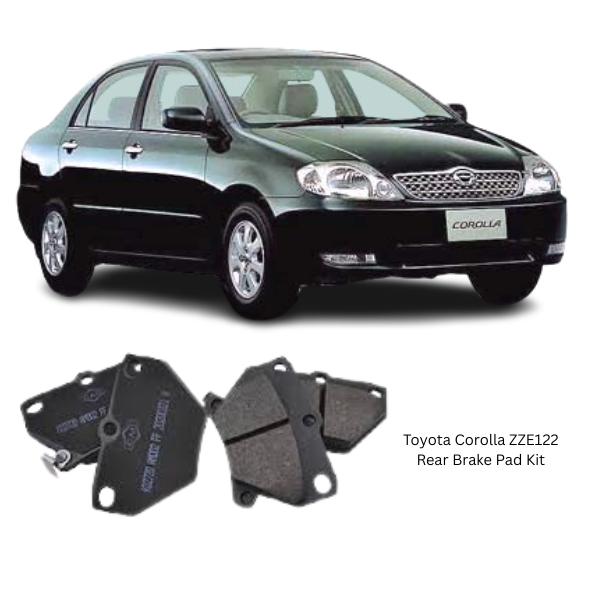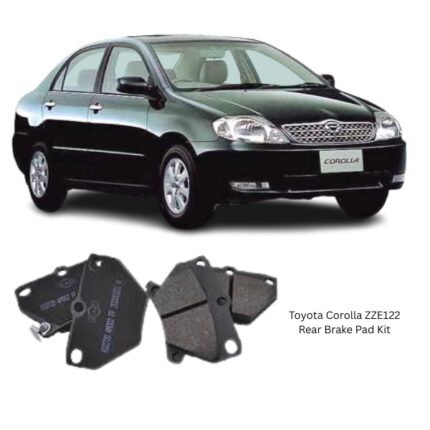Get Toyota Corolla ZZE122 Rear Brake Pad Kit KD2720 in Kenya
When it comes to vehicle safety and performance, the brake system is one of the most crucial components. At the heart of this system lies the brake pads, which provide the necessary friction to slow down and stop the vehicle. A Rear Brake Pad Kit is an essential replacement part designed to restore braking efficiency, ensure passenger safety, and maintain consistent stopping power under different driving conditions.
Purpose and Function
The primary role of rear brake pads is to convert kinetic energy into thermal energy through friction. When the brake pedal is pressed, hydraulic fluid pushes the caliper pistons against the brake pads. These pads then clamp onto the brake discs (rotors), creating friction that slows down the wheel rotation and brings the vehicle to a halt.
While front brakes typically handle more braking force, rear brake pads are equally important for vehicle balance, stability, and even wear distribution. They prevent the rear of the vehicle from lifting excessively under heavy braking, contributing to smoother and safer stops.
Components of a Rear Brake Pad Kit
A comprehensive Rear Brake Pad Kit usually includes:
-
Brake Pads: The main friction material, typically made from semi-metallic, ceramic, or organic compounds.
-
Shims: Thin layers that reduce noise and vibration during braking.
-
Clips/Hardware: To secure the pads and ensure proper alignment in the caliper.
-
Wear Indicators (where applicable): To alert the driver when the pads are worn out and need replacement.
Having a complete kit ensures that all parts work together efficiently, reducing the risk of uneven wear, noise, or premature failure.
Design and Materials
Brake pads are carefully engineered to balance friction performance, heat resistance, and longevity.
-
Friction Material: The pad surface that contacts the rotor. Materials may include:
-
Semi-Metallic: Durable, excellent heat dissipation, slightly noisier.
-
Ceramic: Quiet, low dust, smooth performance, longer life.
-
Organic/NAO: Softer, quieter, less rotor wear, but shorter lifespan.
-
-
Backing Plate: Provides structural support and connects to the caliper piston.
-
Shims and Insulators: Absorb vibrations and minimize brake squeal.
The balance of these materials ensures optimal performance in daily driving, whether in city traffic, highway cruising, or light commercial use.
Key Features
-
Reliable Stopping Power: Engineered to provide consistent braking performance in various conditions.
-
Heat Resistance: Designed to handle high temperatures without fading, cracking, or glazing.
-
Noise Reduction: Equipped with shims and chamfered edges to minimize brake squeal.
-
Low Dust Formula: Reduces brake dust accumulation on wheels for a cleaner look.
-
Precision Fit: Manufactured to match OEM specifications for easy installation.
-
Durability: Long-lasting friction material ensures extended service intervals.
Benefits of a Rear Brake Pad Kit
-
Enhanced Safety: Reliable braking reduces stopping distances and provides confidence in emergencies.
-
Comfortable Driving Experience: Quiet operation and reduced vibrations improve driving comfort.
-
Cost Efficiency: Kits provide all necessary components, preventing the need for separate purchases.
-
Even Wear: Properly fitted pads distribute braking force evenly, extending rotor life.
-
Peace of Mind: With wear indicators and reliable materials, drivers can trust their braking system.
Importance of Rear Brake Pads
Though front brakes perform most of the work, rear brake pads are crucial for:
-
Vehicle Stability: They prevent rear-end instability during sudden stops.
-
Balanced Braking: Distribute braking force evenly across all four wheels.
-
Parking Brake Functionality: In many vehicles, rear brake pads work with the parking brake system.
-
Extended Rotor Life: Proper rear braking prevents front brakes from overworking, reducing wear.
Neglecting rear brake pads can lead to unsafe braking, increased stopping distances, and damage to other components.
Signs Rear Brake Pads Need Replacement
-
Squealing or Grinding Noises: Indicating worn pads or contact with the rotor.
-
Reduced Braking Efficiency: Longer stopping distances or weaker braking power.
-
Vibration When Braking: Caused by uneven pad wear or warped rotors.
-
Dashboard Warning Lights: Some vehicles alert drivers when brake pads are worn.
-
Visible Wear: Pads less than 3mm thick should be replaced immediately.
Maintenance Tips
-
Regular Inspection: Check pads every 10,000–15,000 km for wear.
-
Replace in Pairs: Always replace both rear pads together for balanced braking.
-
Check Rotors: Inspect brake discs for grooves or warping during pad replacement.
-
Proper Bedding-In: After installation, gradually apply brakes to allow pads to seat properly against rotors.
-
Use Compatible Parts: Ensure the kit matches the vehicle’s make and model for correct performance.
Applications
The Rear Brake Pad Kit is suitable for a wide range of passenger vehicles, SUVs, and light commercial vehicles. Depending on the material type and design, it can be tailored for:
-
Daily Commuting: Smooth, quiet operation with long life.
-
Performance Driving: High-temperature resistance for spirited driving.
-
Commercial Use: Durable pads that handle heavier loads and frequent stops.
Why Choose a Complete Kit Instead of Pads Alone
Opting for a kit rather than just pads provides several advantages:
-
Ensures all components are compatible and designed to work together.
-
Reduces installation time since shims, clips, and hardware are included.
-
Improves braking efficiency and noise reduction by replacing all wear-related parts at once.
-
Provides a cost-effective solution compared to buying parts separately.
Common Mistakes to Avoid
-
Installing Pads Only: Without replacing shims or clips, noise and uneven wear may occur.
-
Mixing Materials: Using different pad materials front and rear can cause imbalance.
-
Ignoring Rotor Condition: New pads on worn rotors reduce performance.
-
Not Bedding Properly: Hard braking immediately after installation can glaze pads.
Follow us on Facebook for more parts




